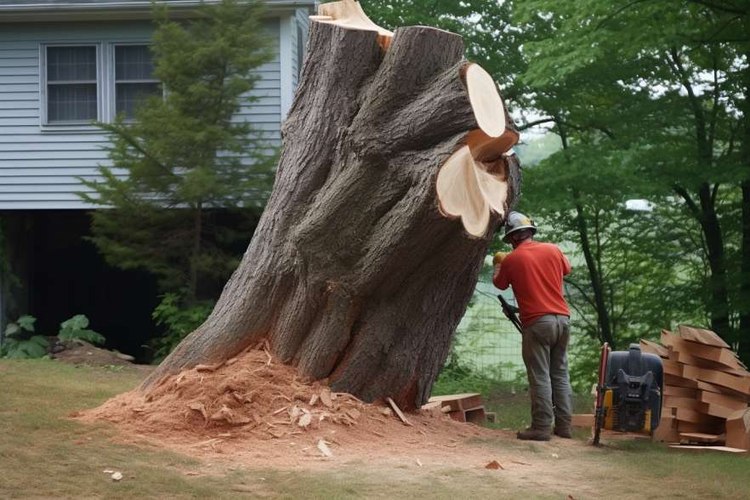Tree Work in Japan – Outdoor Tasks, Team Safety, and Role Guidelines for 2025
Tree-related jobs in Japan often include planting, pruning, removal, and site maintenance. These roles are suitable for individuals who can follow clear safety protocols, work outdoors in varying conditions, and adapt to structured routines as part of a team environment.

Daily Activities in Japanese Forestry and Tree Management
Tree work in Japan involves a range of regular tasks that vary by season and project requirements. In forestry settings, workers typically engage in planting seedlings, thinning forests, and harvesting timber according to sustainable forestry plans. Urban tree workers focus on pruning, crown reduction, and deadwood removal to maintain safety and aesthetics in public spaces. Both settings require routine equipment maintenance, site cleanup, and documentation of completed work.
Japanese tree work often incorporates traditional techniques alongside modern methods. For example, selective pruning approaches like “niwaki” (garden tree pruning) require careful attention to aesthetic principles while maintaining tree health. Daily briefings (“chorei”) are standard practice, where team leaders outline daily goals, assign tasks, and review safety protocols before fieldwork begins.
Essential Skills for Tree Work Equipment Operation
Successful tree work in Japan requires mastering various technical skills. Operating chainsaws and pole saws demands precise technique and strict adherence to Japanese safety standards, which often exceed international requirements. For machinery operation, workers must obtain specific licenses through Japan’s skill certification system, particularly for specialized equipment like cherry pickers, stump grinders, and forestry vehicles.
Physical capabilities are equally important, with workers needing strength for lifting heavy branches and equipment, stamina for extended outdoor work, and agility for safe movement around trees. Technical rope work skills are essential for activities like tree climbing, branch lowering, and rigging systems. Additionally, knowledge of proper lifting techniques is crucial to prevent injuries during material handling.
Safety Protocols and Team Communication in Field Operations
Safety is paramount in Japanese tree work, with comprehensive protocols established by organizations like the Japan Forestry Association. All workers must complete safety training covering hazard assessment, equipment handling, and emergency procedures. Personal protective equipment (PPE) requirements are strictly enforced and typically include helmets with face shields, cut-resistant pants, steel-toed boots, high-visibility clothing, and hearing protection.
Communication follows structured patterns with established hand signals and verbal commands to ensure clarity even in noisy environments. Team leaders conduct daily toolbox meetings to review job-specific risks and mitigation strategies. Japan’s approach to tree work emphasizes collective responsibility, with workers trained to monitor colleagues for signs of fatigue or unsafe practices and empowered to halt operations if dangerous conditions arise.
Seasonal Work Planning and Weather Considerations
Tree work in Japan follows distinct seasonal patterns aligned with the country’s four clearly defined seasons. Spring (March-May) focuses on new plantings and early pruning, while summer (June-August) involves maintenance pruning and pest management, with adjusted hours to avoid midday heat. Autumn (September-November) is peak season for major pruning and tree removal projects, and winter (December-February) centers on dormant pruning and hazard assessment, particularly in areas with heavy snowfall.
Weather considerations significantly impact scheduling. Work typically halts during typhoon season (August-October) when high winds make tree work extremely dangerous. Rain protocols suspend aerial operations when precipitation creates slippery conditions. Temperature extremes trigger mandatory break schedules during summer heat waves and limited work hours during winter cold snaps to prevent cold-related injuries.
Documentation Requirements and Orientation for New Tree Workers
New workers in Japan’s tree industry must complete several administrative steps before beginning fieldwork. Required documentation typically includes a valid residence card for foreign nationals, health examination certificate, personal identification, tax registration, and proof of any relevant certifications or licenses. Social insurance registration (shakai hoken) is mandatory for full-time workers, covering health insurance and pension contributions.
The orientation process is thorough, typically lasting 1-2 weeks. New workers receive training on company policies, safety protocols, equipment operation, and emergency procedures. Many companies implement a mentorship system (senpai-kohai) where experienced workers guide newcomers. Regular skills assessments ensure workers maintain competency, with supplementary training provided as needed. Understanding Japanese workplace etiquette is essential, especially regarding hierarchical relationships and communication styles.
Information for Prospective Tree Workers
This article is intended as general information about tree work in Japan and does not constitute specific job offerings or recruitment. The tree work industry in Japan, like most sectors, has established hiring channels through registered companies, employment agencies, and industry associations. Those interested in pursuing opportunities in this field should conduct research through official channels and understand that actual requirements, conditions, and availability may vary significantly based on location, company, and current market conditions.
Working in Japan’s tree industry requires proper visa status for non-Japanese nationals, with specific requirements determined by Japan’s immigration policies. While this article provides an overview of typical practices in the industry, it does not guarantee employment availability or conditions. Individuals seeking employment should consult official sources and potential employers directly for current opportunities and requirements.
Japan’s tree work sector emphasizes professionalism, safety, and proper training. By understanding the nature of the work, required skills, and industry standards described in this overview, those interested in this field can better prepare for potential future opportunities through appropriate channels.




